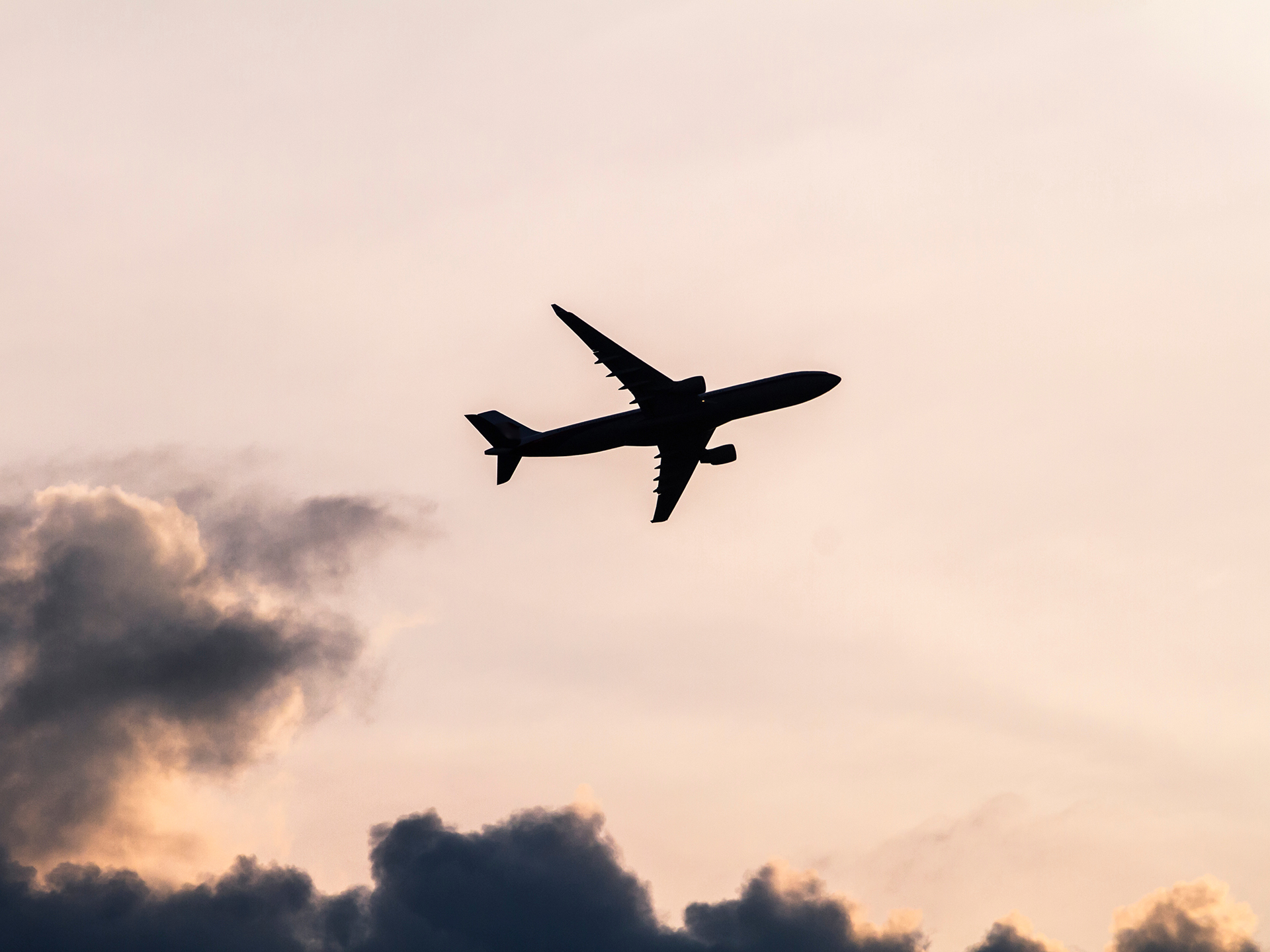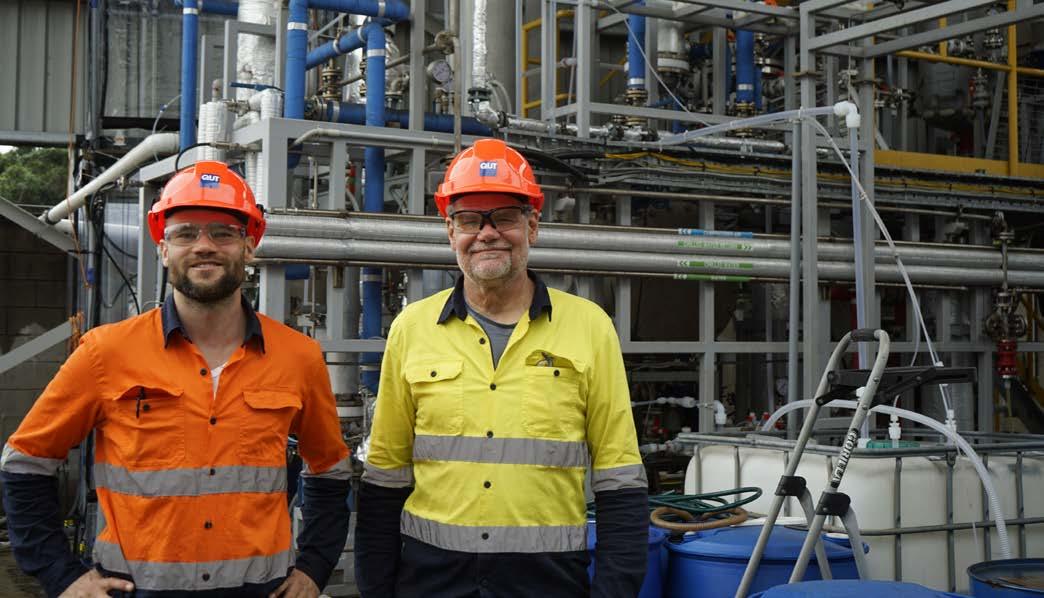
10 minute read
Fuel for thought
BY RENEE CLUFF
Australian Canegrower talks to CANEGROWERS CEO Dan Galligan about what could be in store for sugarcane growers if a local SAF industry takes flight.

What is SAF?
SAF stands for Sustainable Aviation Fuel.
Effectively, it’s a low emissions fuel for the aviation sector, so it’s a fuel that can be added as a drop-in fuel to an existing jet fuel and significantly reduces by up to 80% of the amount of greenhouse gas emissions as compared to standard aviation fuel.
It’s produced generally through the use of either agricultural waste or a conversion of alcohol to jet fuel or a whole range of other technologies.
There’s a variation of chemistries that can be used for the creation of the fuel, but the main point is that it’s valuable because it’s a low emissions fuel for airlines.
What feedstocks are used to make SAF?
It ranges from municipal waste (basically food scraps) to tallow (animal fats), which is currently the most popular feedstock for global sustainable aviation fuel generation, right through to agricultural waste.
That could be oil seeds, such as conversions of canola, and then for the interest of the sugarcane sector you could be using molasses, ethanol, bagasse, sugar, sugar juice or indeed the whole sugarcane crop fibre.
What is the demand for SAF?
It’s huge and from an industry perspective, we started working back in 2021 with Sugar Research Australia and the Australian Sugar Milling Council to develop Sugar Plus: a roadmap for how the industry might diversify over the next 20 years.
Together, we identified that SAF, biodiesel and sustainable plastics were the three most promising targets for us as an industry to participate in.
In relation to SAF, there are numerous reports and they all recognise that there’s a huge global demand –airlines have all made commitments to go to zero emissions by 2050, as most modern economies have done.
Around 80% of the emissions from an airline come from fuel use and the only way any global airline is ever going to get to jet net zero by 2050 is by having a low emissions fuel and that must be a SAF.
A very, very simple example is that for Qantas to achieve net zero by 2050, they’ve made a commitment that 10% of their annual fuel load by 2030 must come from SAF. That’s only five years away and 10% of Qantas’ annual fuel load is 500 million litres of SAF.
There is particularly for Qantas an objective to be buying their fuel out of Australia, but currently there’s no source of SAF at a production scale in Australia.
What the airlines must do is enter into offtake agreements with biorefineries around the world.
The big fuel companies are behind these sorts of projects, so the major ports that people fly in and out of around the world are also the major locations for fuels airlines fuel up from.
So that’s where they’re getting fuel now and they’re trialling SAF out of those ports – ports like Singapore, Dubai and Los Angeles and that’s really the challenge for Australia.
We want to become one of those locations by which global airlines will be able to fill their jets up with SAF.
At the moment, the infrastructure is well established, particularly in Singapore and Los Angeles. It is not established in Australia yet.

How well placed is the sugarcane industry to take advantage of this growing demand?
There are other feedstocks, and they are all going to have to go into a big bucket and this will become an economic discussion in the end. In Australia, the first trials of production of SAF will come from ethanol.
But having said that, there are other projects, particularly around the use of municipal waste.
The advantage of municipal waste is that there are lots of people around Australia and they’re generating waste, and it all must be dealt with and usually it’s costly to get rid of it, so it might be cheaper to turn it into an economic advantage: to turn it into aviation fuel.
However, it’s hard to aggregate and the fuel sector needs aggregation of the feedstock. It needs to be brought to a processing facility to then be converted to a fuel and then the fuel needs to get into the wing of an aeroplane. It’s a logistical challenge.
So, if you opt for an agricultural product that could be sugarcane, or sugarcane byproducts or sugar juice, or sugar crystals, or molasses all in the same bucket, we’ve got strong advantages there. We’ve already got a massive logistics industry around sugar production.
We’ve got a very large industry, we’re producing 30 million tonnes of sugarcane that we’re converting to sugar crystals, ethanol, molasses and bagasse.
All those products in the existing sugar supply chain could in future go into a biorefinery for SAF, and we’ve got a really strong advantage compared to other feedstocks because we are already aggregating them.
They’re already going to a sugar mill so projects around aviation fuels can effectively align and it’s a very, very smart thing to be complementary and in parallel to our existing sugar supply. We’re also coastal, so we’re close to where airlines are coming in and out so that’s close to the existing fuel infrastructure.
But we’re already currently using all the sugarcane we produce. When we talk to the fuel sector, the first conversation we have is well, we use it all at the moment. If it were to be used for something else, it would have to be economically viable to do so.
We don’t want to cut our nose off to spite our face. We want to see a domestic SAF industry, but we want to see that industry developing in parallel to the existing sugarcane sector as a priority. That’s the first priority and we are influencing policy from the beginning rather than waiting for projects to develop around farmers.
I personally was involved as a representative of CANEGROWERS with the previous Labour government and Stephen Miles on a SAF roundtable to talk about the opportunities with the airlines and the fuel producers and manufacturers, particularly the opportunities around providing sustainably sourced sugarcane for a feedstock for the airlines.
Since then, we’ve joined Bioenergy Australia, which is a national body that has membership across the whole range of airlines, fuel manufacturers, biorefineries, chemists and feedstock producers who are looking at the policy environment for the domestic bioenergy sector.
Within that group, we’ve formed an alliance of feedstock providers and we’re working directly with the Australian Sugar Milling Council (ASMC), GrainGrowers and AgTrade Australia to look at how the feedstock sector would be represented in the SAF industry.
We’re also working directly with Jet Zero to understand the progress of their project. We brought them into discussions with the CANEGROWERS Policy Council, discussions at Sugar Cubed 2024, to understand the commercial drivers for Jet Zero.
We’re now bringing all that knowledge, under the guidance of our Policy Council down to the district level. We’re working with each district to establish a strategic plan to understand where each district fits and what it might mean for each individual grower because it will emerge as some opportunities in some districts and maybe not that big an opportunity in others.
So, we need to understand where and how the commercial drivers within the industry would pan out and what it might mean for the grower. It needs to be a profitable economic opportunity for the grower and for the communities the growers are in, whether it’s going to mean jobs or a new industry sitting next door.
But the objective is very, very clear. We want to be a part of developing a domestic SAF industry that sits complementary to our existing sugar supply chain.
How do growers receive their fair share?
There would have to be some form of commercial contract at the outset and we do work closely with the ASMC on this to understand the opportunities and try to work out where our existing millers are at.
For instance, Wilmar Sugar and Renewables has a renewables business and is the largest producer of ethanol at Sarina, and ethanol can go straight to a conversion to jet fuel.
There are other projects that some growers are involved in, in terms of renewable fuels across the state, but certainly there is a huge opportunity for the existing sugar milling companies to partner with Jet Zero or others to see diversion of excess bagasse, or molasses or sugar juice or certainly ethanol into jet fuel.
That’s up to them but we think that the growers need to be at the table to make sure that the interests of farmers are respected, because there’s a commercial agreement, the Cane Supply Agreements about the relationship between growers and millers for sugar.
In the long run it is plausible that a large aviation fuel producer might want to see whole of cane or even increased production. There’s lots of R&D that’s required around high energy canes or higher oil canes or longer season canes, but those opportunities must involve growers.
We must ensure that growers are at the table for the discussions if we’re going to ensure that growers see an economic return for the industry, because while there’s huge, huge opportunity and huge potential for another emerging industry for diversification for the industry, one of the greatest challenges for SAF is that its production cost is three or four times more than conventional fuel.
There’s no airline in the world who wants to spend more money on fuel than they have to, so even though they need the fuel, they’re going to want to spend as little as they can on it.
What we want for growers is most definitely an economic return, but equally if you’re not in a position where you can be advantaged by the development of SAF, we want to be able to still 100% participate in a competitive global sugar market.
We are in a world market, we export 85% of the sugar we produce and, in the future, this global demand for aviation fuel is going to put pressure on the global demand for ethanol and sugar and ultimately sugarcane.
There is a strong argument that there is an upside here for the grower regardless of whether the aviation fuel sector takes off in Australia.
We either develop a domestic SAF industry that shows an economic return for growers, or if we don’t, there will be pressure on the world sugar market, the ethanol market and the market for sugarcane fibre.
Hopefully, that means good prices and good returns for Australian sugarcane producers who are supplying to the sugar market. But we need to ensure that the interests of growers are represented whether it’s for sugar or fuel – it makes no difference.
SAF podcast
To hear a more in-depth interview about the Australian sugarcane industry’s place in the Sustainable Aviation Fuel sector, head to canegrowers.com.au/news-media/podcasts
Projects In The Pipeline
Jet Zero Australia’s flagship Project Ulysses project is the biggest in the country, aiming to be producing 100 million litres of SAF by the end of 2026. The Townsville-based project will convert bioethanol from agricultural by-products into SAF.
Mercurius Australia has built a biorefinery at the Mackaybased Queensland University of Technology’s Renewable Biocommodities Pilot Plant, testing a new method to turn bagasse into renewable diesel and SAF. The Mercurius Rising Pilot project used Renewable Acid-hydrolysis Condensation Hydrotreating (REACH™) technology to convert biomass into liquid biofuels.







